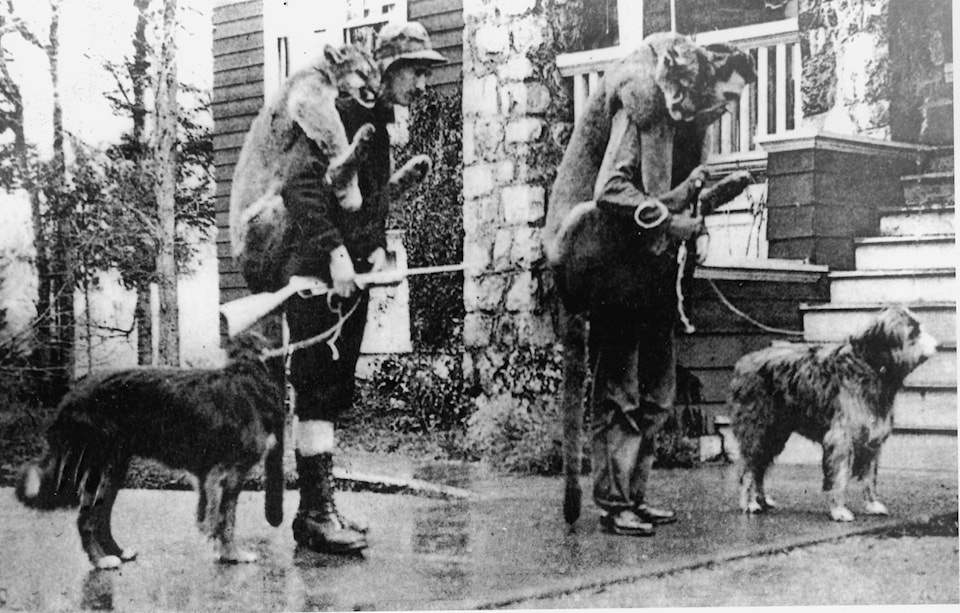Elida Peers
Contributed
It’s not the way local society works today, but there was a time when big game hunting was part of the region’s culture. These two hunters proudly posed in front of the Belvedere Hotel in 1927, the shoulders of each bearing the weight of their kill, adult cougars.
This image came to us from Kenny Hill many years ago as a postcard. We had it made into a poster and placed it in the Belvedere Hotel exhibit at the museum.
One day in the 1980s, we were hosting a bus tour of middle-aged people from up-Island, and the folks were wandering around the museum. Suddenly we heard a scream, and a woman called out: “There’s my dad!” Turned out her dad was Cougar Smith a big game guide who had led this particular hunting expedition to the uplands of the Sooke River. Driving up Island nowadays, you might notice Cougar Smith Roadnear Courtenay.
When the Belvedere Hotel (originally named the Sooke Harbour Hotel) was built in 1912, the expectation was that prospective land purchasers would patronize the hotel while they looked for property. Next thing, of course, the First World War began, and history changed. The hotel, which was a grandiose four-storey structure tall on the headland at the mouth of the Sooke River, overlooked the stable, which housed their riding horses (now the Castle Beer and Wine Store).
Back in those days, the hotel hosted many activities, but not so much in the way of land development. Managed by Charlie Barbour initially, then Maj. George Nicholson, and later two French brothers, Andre and Raoul Robillard, its activities were mainly social, with weddings and dances. Even the late Duke of Windsor, the former King Edward VIII, visited twice.
Alongside the social, though, rumours swirled about rumrunning, opium smuggling and other interesting trysts. Sadly, the Belvedere burned to the ground in 1934. A few artifacts were saved, and the four stone columns (you can see two in the picture) were salvaged by the Sooke Historical Society and rebuilt at the entrance to Ed Macgregor Park.
Perhaps a surprise to readers today, Sooke earned a reputation for big game hunting. Some may recall that at Jasper in the Canadian Rockies, Brewster has been a name of some significance. A family member, Jim Brewster lived near the mouth of DeMamiel Stream and guided many a hotel guest expeditions, out after deer, bear and cougar.
The same could be said for the 17 Mile House. When it was built in 1900, the Daily Colonist reported “… It will be called the British Ensign and will be a boon to sportsmen, who heretofore have had no hotel to go to at Sooke.”
•••
Elida Peers is the historian of the Sooke Region Museum.
